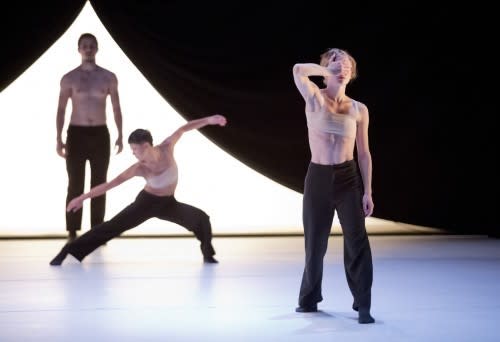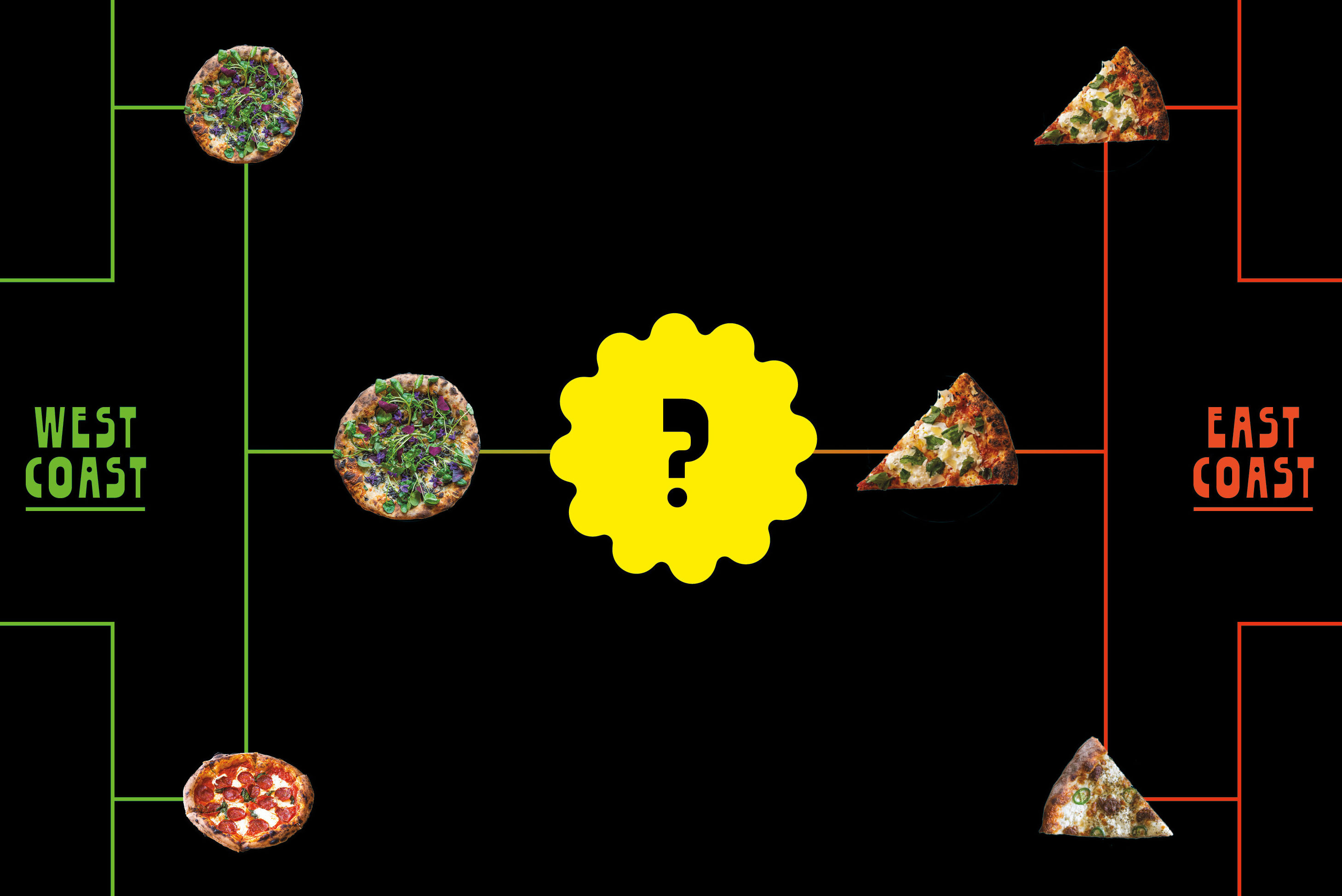Review: NW Dance Project

Elijah Labay, Ching Ching Wong and Andrea Parson in Ihsan Rustem’s “Mother Tongue.” Photo by Blaine Truitt Covert
The performance confirmed that NWDP seems to have discovered its soul mate in London choreographer Ihsan Rustem, who created “State of Matter,” the breathtaking piece that won NWDP the 2011 Sadler’s Wells Global Dance Contest and took it to London. Rustem returned last night with another winner: “Mother Tongue,” a performance inspired by his visit to his motherland, Turkey, that fused all aspects of the production into a thrilling, seamless, almost dystopian Fosse performance that drew at least one uncontainable ‘Whoa!’ from the audience at its finale.
Instead of entering from the sides, dancers entered the stage from behind the black back curtain, which would rise at different points, like the tips of a spade ascending from the floor (or the opening of a caravan tent), to reveal the silhouette of the dancer standing in front of another glowing screen. Outfitted in only black pants and what looked like tight Ace bandage tops for the women, the company was stripped of gender (or perhaps more accurately, uniformly masculinized), resulting in a differentiating dynamic that existed purely in height and stature, with very potent balances being struck by pairing the tallest dancer, Elijah Labay, with the two most petite, Andrea Parson and Ching Ching Wong, and where still silhouettes standing against the back screen were as powerful as the dancers moving on stage.
“Mother Tongue,” like the other two premieres, showcased in particular the magnificent skill of the company’s newest Princess Grace Award–winner, Franco Nieto. (The award is given to six U.S. dancers per year; Parson won it in 2010.) Unlike the upright poise of most ballet dancers, where limbs often extend straight out from the body like vectors, Franco, a former football player, moves with the hunched, wound stature of the jock, his posture and limbs tending to be curled and bowed. Yet he possesses an incredible strength and athleticism that, combined with an inexhaustible grace, gives him the ability to seemingly float through the air, to fly himself from upright to the floor and back again like he’s floating through a gravitational field of honey. He closed out “Mother Tongue” in a moment of such breathtaking beauty, as confetti snowed from the sealing on the eight dancers, that the standing applause was immediate.
The other two works were good, but not nearly as well formed as “Mother Tongue.” “Play It As It Lays,” by New Yorker Gregory Dolbashian, was an athletic ensemble piece inspired by the poetic writings of Joan Didion and Alan Watts. The most interesting points for me involved duets first by Lindsey McGill and Ching Ching Wong (whose explosive pixie movement never ceases to delight) and then between Nieto and Elijah Labay, that played with the gendered dynamic of dance by having same sexed pairs dancing almost in opposite sex style (Nieto casting through the air while Labay supported him, and Wong with her pageboy haircut interacting with the almost femme fatale that is the much taller, blonde McGill). But overall, the piece lacked a certain conviction and clarity, and the ending, with Parson, who read Didion's text from offstage a tad too emphatically, appearing in a horrible black suit to confront the dancers, felt forced.
“Trace in Loss,” on the other hand, ended with a moment so perfect that, instead of feeling like a satisfying finale, left me wondering how much better the dance could’ve been if it had been further explored. The dance was a series of three couples “representing various stages of time passed in a relationship,” although inexplicably the women were in futuristic looking costumes, like they were out of some Austin Powers spoof on Tron (not helped by the spy thriller space music and collision sound effects). Towards the back of the stage hung a cluster of netting like a giant pillar upon which screensaver–like light shows were projected and from which dancers occasionally entered or exited. Throughout the performance, the pillar felt incoherent and underutilized, but it was not until the end that I realized just what potential it had. Labay danced into the cluster of netting before the lights went down. Then, suddenly, a video of a dancing silhouette was projected through the nets, hitting each at different depths on stage, so that there was a stunning echoing image of a man of pure light, like he had been transformed into photons or entered our Tron matrix completely.
Choreographer Soares created the effect through filming Labay painted completely black and then inversing the image, so that the projected figure was pure white. And with it, all the preceding screen savers felt hollow, making one wonder what would’ve happened if this light being was incorporated more fully, perhaps transforming from flesh to light and back again, and everything else pared down. The possibility is extraordinary, and I hope Soares might continue to evolve the piece.
Throughout all three pieces, the dancing was uniformly excellent, reminding us how good it is to have our world class company back home.




